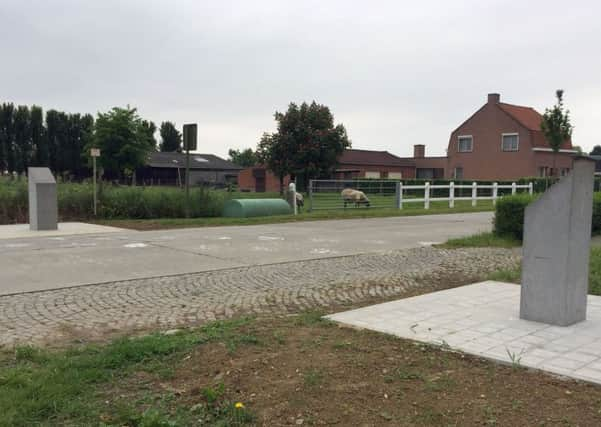Battle of Messines: Ulster and Irish troops united in key assault


Some 400 tonnes of explosives packed at the end of 19 underground tunnels dug deep below enemy positions detonated almost simultaneously, claiming the lives of 10,000 German soldiers in an instant.
“I do not know whether we shall change history,” a British general remarked before the ‘zero hour’ blasts. “But we shall certainly alter the geography.”
Advertisement
Hide AdAdvertisement
Hide AdSo began the Battle of Messines Ridge in Belgium – one of the Allies’ most decisive victories on the Western Front during the First World War.
Within seconds of the mines going up, and as the debris still rained down, thousands of Allied soldiers scrambled from their trenches and began the assault on the high ground south of Ypres.
Among them, side-by-side in the thick cloud of dust, were soldiers from Ireland’s 36th Ulster and 16th Irish – the first occasion the unionist and nationalist divisions formed from the crucible of Ireland’s ‘Home Rule’ crisis fought together.
Both had seen action at the Somme a year earlier, but at different stages of that bloody battle. In Flanders Fields, the two divisions, both part of the 9th Corp of the 2nd Army, were beside each other in the line as they advanced towards the village of Wyschaete under a creeping artillery barrage.
Advertisement
Hide AdAdvertisement
Hide AdTheir proximity is evidenced by a symbolic moment that endures to this day. When Major Willie Redmond, a nationalist MP from Wexford who volunteered to fight in his mid-50s, was fatally wounded in no-man’s-land it was a young unionist private in the 36th Ulster – John Meeke from Ballymoney – who went to his rescue.
Meeke, who received a medal for gallantry, was also hit by shrapnel as he tried to drag Redmond to safety and both men were later evacuated from the field by stretcher bearers.
As the day progressed the battle raged on across the devastated landscape, with the Allies moving into German territory in a series of bite and hold operations.
Under a hail of shellfire, tanks and aircraft supported the offensive as the Germans tried to defend heavily fortified redoubts and machine guns bunkers.
Advertisement
Hide AdAdvertisement
Hide AdBy midday, their resistance had been exhausted. The Allies had punched through a front line that had remained virtually unmoved for two years by a full three kilometres – gains consolidated as the fighting continued over the next few days.
By First World War standards, the battle was an undoubted military success for the Allies. The Irish divisions were by no means the only to make gains, with the Anzac Corps taking the villages of Messines.
Success never came without cost in a conflict that wreaked such a savage human toll. The Allies sustained around 10,000 casualties on the day, the Germans more than double that number.
Between them the 36th and 16th lost around 2,500 killed, injured or missing during the capture of Wyschaete.
Advertisement
Hide AdAdvertisement
Hide AdMessines was not the only time the 36th and 16th fought together. They would do so once again, two months later, a few miles northward during the infamous Battle of Passchendaele.
If history views Messines as a triumph, the joint Irish assault near Frezenberg Ridge at Langemark on August 16 1917 was a disaster.
Both divisions suffered heavy losses as they were cut down by German machine guns in the sapping mud of no-man’s-land just moments after going over the top – 1,200 were killed and many thousands more injured in an ill-fated engagement that was over before 9am.
The Irish losses at Langemark, Wytschaete and throughout the four-year conflict – some 50,000 in total – are now commemorated at the Island of Ireland Peace Park in Messines, where a traditional Irish round tower was built in their memory in 1998 – the same year the Good Friday Agreement was signed.
It stands not only as a memorial to the past, but as a symbol of reconciliation for the future.